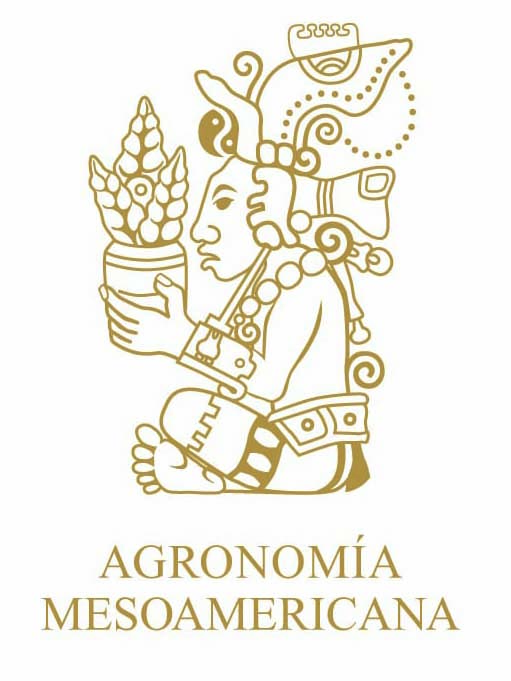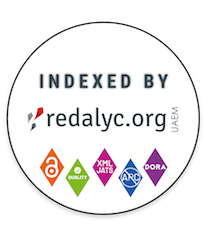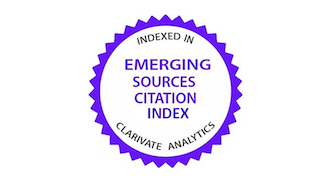Modeling strategies to determine the effective dose of herbicides
DOI:
https://doi.org/10.15517/am.2025.62055Keywords:
logistic regression, herbicide, dose-response, estatistical analysis, effective doseAbstract
Introduction. Dose-response trials are used with the objective of selecting the efficient herbicide dose for the management of weed species. Data analysis of these experiments has been criticized for the use of statistical models that do not fit the distribution of the response variable, failure to specify the original structure of the experimental design, and the preference for partial models instead of fitting a unique model. Nonlinear mixed models are presented as a more accurate alternative for analyzing these experiments. Objective. Determine an effective dose of herbicide using three modeling strategies in dose response trials. Materials and Methods. Two independent experiments were conducted in greenhouses located in Tambor de Alajuela, Costa Rica during 2012 where the fresh weight (PF) in grams (g) of a biotype of Paspalum paniculatum L. was quantified as a function of grams of acid equivalent (GEA) of an applied herbicide, under a randomized complete block design. A four-parameter logistic regression model was used as a basis and three model variants were fitted. Using penalized information criteria [Akaike information criterion (AIC) and Bayesian information criterion (BIC)], the best fitting model was chosen. Results. The strategy that considered the experiment and the block within each experiment as random factors resulted the most precise. This model estimated the confidence interval (95 %) for the mean effective dose of GEA between 335,12 and 384,32 g. Conclusion. Integrating information from independent experiments as random effects within a unique model generated more accurate estimates of the glyphosate’s effective dose.
Downloads
References
Burgos, N., Tranel, P., Streibig, J., Davis, V., Shaner, D., Norsworthy, J., & Ritz, C. (2013). Review: Confirmation of Resistance to Herbicides and Evaluation of Resistance Levels. Weed Science, 61(1), 4-20. https://doi.org/10.1614/WS-D-12-00032.1
Davidian, M; Giltinan, D. (2003). Nonlinear models for repeated measurements: an overview and update. Agricultural Biological and Environmental Statistics 8(4): 387-419. DOI 10.1198/1085711032697.
Di Rienzo, J. A., Casanoves, F., Balzarini, M. G., Gonzalez, L., Cuadroda, M., & Robledo, C. W. (2020). Infostat (No. 2020) [Software]. Centro de Transferencia InfoStat. https://www.infostat.com.ar/index.php?mod=page&id=15
European and Mediterranean Plant Protection Organization. (2012). PP 1/152 (4) Design and analysis of efficacu evaluation trials. EPPO Bulletin, 42(3), 367–381. https://doi.org/ 10.1111/epp.2610
European and Mediterranean Plant Protection Organization. (2017). PP 1/214 (4) Principles of acceptable efficacy. EPPO Bulletin, 47(3), 293–296. https://doi.org/10.1111/EPP.12395
Food and Agriculture Organization of the United Nations. (2006), Guidelines on efficacy data for the registration of pesticides for plant protection. https://openknowledge.fao.org/server/api/core/bitstreams/fa44518f-e597-4e96-9764-4d4f49229a36/content
Fox, J., & Weisberg, S. (2019). An R Companion to Applied Regression (3rd edition). Sage
Gerhard, D., & Ritz, C. (2017). Marginalization in nonlinear mixed-effects models with an application to dose-response analysis. https://doi.org/10.48550/arXiv.1707.02502
Keshtkar, E., Kudsk, P., & Mesgaran, M. B. (2021). Perspective: common errors in dose-response analysis and how to avoid them. Pest Management Science. 77(6), 2599–2608. https://doi.org/10.1002/ps.6268
Leguizamon, E. S., Ferrari, G., Williams, M. M., Burgos, N. R., Travlos, I., & Korres, N. E. (2019). Response of Annual Weeds to Glyphosate: Evaluation and optimization of application rate based on fecundity-avoidance biomass threshold criterion. Agronomy, 9(12), 851-865. https://doi.org/10.3390/AGRONOMY9120851
Nielsen, O. K., Ritz, C., & Streibig, J. C. (2004). Nonlinear Mixed-Model Regression to Analyze Herbicide Dose–Response Relationships. Weed Technology, 18(1), 30–37. https://doi.org/10.1614/WT-03-070R1
Pinheiro, J. C. & Bates, D. M. (2000) Mixed-Effects Models in S and S-PLUS. Springer.
Ramirez, F. (2017). Mecanismo de resistencia de paspalum paniculatum l. (poaceae) al herbicida glifosato [Tesis de Doctorado, Instituto Tecnológico de Costa Rica]. Repositorio TEC. https://repositoriotec.tec.ac.cr/handle/2238/10069
R Core Team. (2024). R: A language and environment for statistical computing (No. 2024) [Software]. R Foundation for Statistical Computing. https://www.r-project.org/
Ritz, C., Baty, F., Streibig, J. C., & Gerhard, D. (2015). Dose-Response Analysis Using R. PLOS ONE, 10(12), e0146021. https://doi.org/10.1371/journal.pone.0146021
Ritz, C., Jensen, S. M., Gerhard, D., & Streibig, J. C. (2019). Dose-Response Analysis Using R (1st ed.). Chapman and Hall/CRC. https://doi.org/10.1201/b21966
Ryan, T. P. (2004). Planning, Construction, and Statistical Analysis of Comparative Experiments. Journal of Quality Technology, 36(4), 454–457. https://doi.org/10.1080/00224065.2004.11980292
Schabenberger, O., Tharp, B., Kells, J., & Penner, D. (1999). Statistical Tests for Hormesis and Effective Dosages in Herbicide Dose Response. Agronomy Journal, 91(4), 714-721. https://doi.org/10.2134/agronj1999.914713x
Seefeldt, S., Erik Jensen, J., & Fuerst, P. (1995). Log-logistic analysis of herbicide dose-response relationships. Weed Technology, 9(2), 218–227. http://www.jstor.org/stable/3987736
Streibig, J. (1980) Models for curve-fitting herbicide dose-response data. Acta Agriculturae Scandinavica, 30(1), 59–63. https://doi.org/10.1080/00015128009435696
Szöcs, E. & Schäfer, R. B. (2015). Ecotoxicology is not normal: A comparison of statistical approaches for analysis of count and proportion data in ecotoxicology. Environmental Science and Pollution Research, 22, 13990-13999. https://doi.org/10.1007/s11356-015-4579-3
Wickham, H. (2016). ggplot2: Elegant graphics for data analysis (2nd ed.). Springer International Publishing. https://doi.org/10.1007/978-0-387-98141-3
Downloads
Published
How to Cite
Issue
Section
License
Copyright (c) 2025 Alejandro Vargas Martinez, Jorge Claudio Vargas-Rojas, Eduardo Corrales Brenes

This work is licensed under a Creative Commons Attribution-NonCommercial-NoDerivatives 4.0 International License.
1. Proposed policy for open access journals
Authors who publish in this journal accept the following conditions:
a. Authors retain the copyright and assign to the journal the right to the first publication, with the work registered under the attribution, non-commercial and no-derivative license from Creative Commons, which allows third parties to use what has been published as long as they mention the authorship of the work and upon first publication in this journal, the work may not be used for commercial purposes and the publications may not be used to remix, transform or create another work.
b. Authors may enter into additional independent contractual arrangements for the non-exclusive distribution of the version of the article published in this journal (e.g., including it in an institutional repository or publishing it in a book) provided that they clearly indicate that the work was first published in this journal.
c. Authors are permitted and encouraged to publish their work on the Internet (e.g. on institutional or personal pages) before and during the review and publication process, as it may lead to productive exchanges and faster and wider dissemination of published work (see The Effect of Open Access).




























